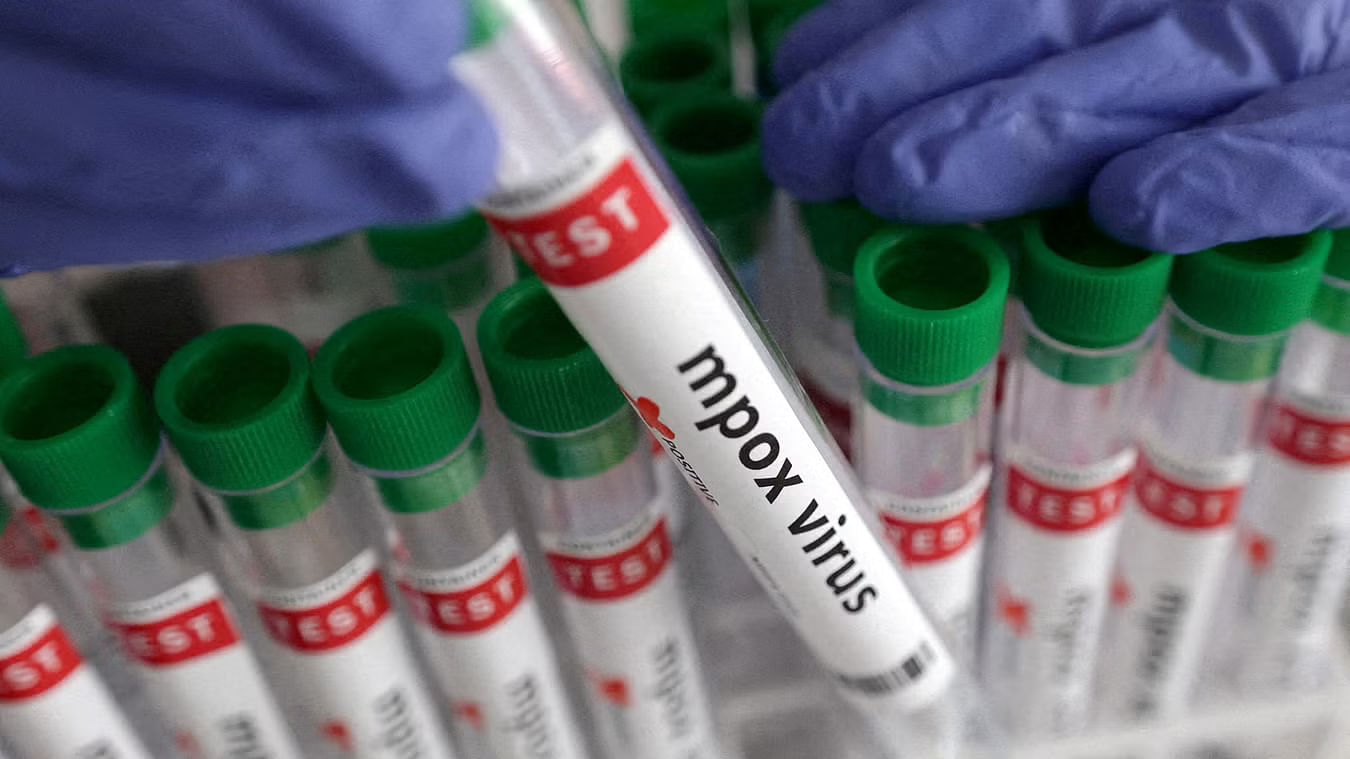
A test tube labelled 'Mpox virus positive' is held (Representative Image).
Credit: Reuters Photo
By Jason Gale
Australia’s success in virtually eliminating mpox within six months of an outbreak in 2022 is now being overshadowed by a sudden and alarming resurgence, highlighting the challenges ahead as the world braces for a potentially more dangerous strain.
The country went months at a time with no reported cases from the end of 2022 through early this year, following free vaccinations for at-risk groups, aggressive safe-sex messaging and heightened public awareness — even in March of 2023, when Sydney hosted over 20,000 international visitors for the World Pride festival. That entire year, only 26 cases were reported.
Now a new strain of the mpox-causing monkeypox virus threatens to trigger a more severe global outbreak, including in Australia. In a dramatic turn, the country saw 179 cases in August alone, more than in the two previous years combined. Nearly 400 have been reported so far in 2024.
Although Australia has yet to report any cases of the more dangerous clade Ib strain, the surge in infections from the less-severe IIb variant underscores the importance of maintaining high vaccine coverage, even though current shots may not offer complete protection.
Australia's mpox cases have rebounded.
Credit: Bloomberg Photo
Of more than 550 reported cases in Australia so far, only one was in a woman, indicating that transmission is occurring almost exclusively in men who have sex with men.
“In Australia, there’s no doubt that the short-term response has to be much more vaccination in gay and bisexual men,” said Andrew Grulich, head of HIV epidemiology and prevention at the University of New South Wales’s Kirby Institute in Sydney.
“We need gay men to hear that it’s back, it’s effectively here to stay and, therefore, the way forward is to get vaccinated.”
The swift rollout of smallpox vaccines — effective against the closely-related monkeypox virus — along with rapid case detection and isolation, helped curb an explosive mpox clade IIb outbreak in 2022 that affected more than 95,000 people globally.
Vaccine Drive
Before June, reported mpox cases in Australia never exceeded 62 in a month, buffering gay and bisexual men from a disease that causes excruciatingly painful lesions — a factor that drove vaccination rates among at-risk men close to 90 per cent in England and in cities like Washington and New York.
Community surveys in New South Wales and Victoria, Australia’s most populous states, indicate that only half of gay and bisexual men have been vaccinated, leaving large numbers vulnerable to the infection, said Grulich. Almost two-thirds of cases last month were in Sydney and other parts of New South Wales.
In the current Victoria outbreak, the majority of cases have occurred in unvaccinated people or individuals who have received only one dose, said Clare Looker, Victoria’s chief health officer. Two doses of vaccine are required for optimal protection, she said.
Two doses of Bavarian Nordic A/S’s smallpox vaccine were 82 per cent effective at protecting against mpox, UK Health Security Agency scientists estimated in a study last week.
While about half of the cases in England last year occurred in vaccinated patients, no vaccinated mpox patient was hospitalized. That indicates the Danish company’s shot “probably protects against severe disease,” they said.
In vaccinated cases, mpox causes a much milder illness, resulting in fewer or less apparent systemic symptoms such as fever, body aches, fatigue, and swollen lymph nodes, said Christopher Fairley, director of the Melbourne Sexual Health Centre and a professor of public health at Monash University.
In some cases, patients may have only one or two lesions, which may be mistaken for other conditions like syphilis or genital herpes.
However, people with unhealed sores risk transmitting the infection through physical contact, making early case identification critical for stemming further spread, according to Fairley.
“If you get a spot, come and show it to us,” he said.